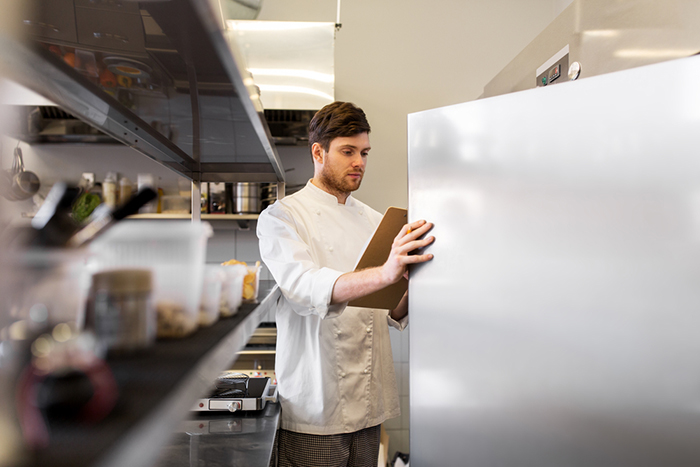The words “take inventory” are enough to make your staff cringe and run off in 30 different directions. You’ve tried getting your staff to do it and it just doesn’t go well. They fudge numbers and are very inconsistent. Instead, you try to do it yourself, but every time you pick up the pen and clipboard, there’s a dozen other things to put out. Yet somehow you get by, for now at least…
Why inventory matters
Inventory management for a restaurant can be a cross between gibberish and long division. In fact, it’s such a pain that the task can often fall to the bottom of the to-do list, where it sits unchecked for the week. Then weeks turn into months. Uh oh. I don’t need to explain why taking inventory is important. You know it’s important. Your inventory is one of the biggest assets of your restaurant. You should always know how much of it you have, and how much it’s all worth. It’s also a way to help keep your costs down and avoid any food waste, spoilage, or theft. It allows you to know when you’re running low on product and when you have an excess.
Why should my current inventory process be ditched?
I remember the old restaurant days. Sunday nights were client’s designated inventory days. The kitchen team would break up the inventory list so they could get through it quicker. David would take the walk-in, Jenny took dry goods, and Nate took the alcohol closet. They all rushed to count what was on the shelves and filled in their spreadsheets as quickly as possible. Needless to say, the problem with the inventory process was immediately clear. Nothing ever lined up correctly. Big ticket items were always being counted lower than expected and out of nowhere, someone would stumble upon three 50lb bags of AP flour. The kitchen was a disorganized mess. Items were spread out everywhere, making it extremely difficult to count. Lemons? They could be found in the bar area, walk-in fridge, even dry storage. Who knows? See the case of avocados over there? Dave would count it as half a case. Jenny would count it as half a case half the time, and two-thirds the rest of the time. Nate would just walk right by it, just trying to get out of the restaurant before midnight. Counting discrepancies were simply unavoidable.
At the end of the day, the restaurant employees were spending too much time taking inventory and the information they gathered was still always wrong. By the time they got their Cost of Goods Sold and Inventory for the month of May done, it was the second week of June. They were always reacting on old information instead of course-correcting immediately. Not to mention the long countless and mostly overtime hours it took to take inventory – now affecting your labor cost. There had to be a better way.
Taking inventory with KPI Accounting
The solution is to implement a system that transcends the variability of your staff, doesn’t require hours of work on your end, and gives up-to-date reporting so you can make decisions today before you end up with a problem tomorrow. KPI Accounting makes it possible to simulate an inventory and log in your weekly Cost of Goods Sold without having you count…How? We partner with Orderly and XtraChef and set up, map out, extract and pay your bills with a click of a button.




